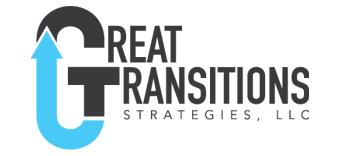Conversation between colleagues:
“I think I need to change my job title to fire chief. I feel like I spend the entire day dealing with fires. One after the other, in meetings and in between, everyone comes to me with their issues to resolve. I thought after I got to this stage things would change. Granted I am good at it, enjoy a fast-paced operation, and I get a lot of satisfaction by solving issues, but I am feeling like I am not focused on the right areas.”
Could this be you? To me this is a leader who was promoted for their ability to produce results. It could also be a founder stuck in startup mode, that has not grown into their new leadership role.
If the above resembles you, what would be the impact if you were able get off the “key person” treadmill? Many leaders talk about reducing stress, increasing productivity and being focused outwardly. But, how do they do it? Here are some thoughts.
To get started, answer two simple questions:
- What elements of your leadership position give you the most satisfaction?
- How do you define a productive day?
These are not surface level questions. Isolate when and where you feel the most accomplished during your day? Does your answer have any elements of: being called on to solve immediate problems, operating at a fast pace, or being able to pack a lot into each day?
Let’s explore what this tells you by using some metrics on the above questions. Use a scale of 1-10 to rate the elements of your position where you feel the most satisfied.
Make your own list but, here are some examples to help you get started:
- Being fully engaged in the daily pace
- Mentoring my subordinates
- Growth of my subordinates
- Solving problems
- Being at the center of operations
- Leaving work each day knowing I accomplished a lot
- Building a strategic vision
- Being a subject matter expert
- Creating partnerships
Now define a productive day: When I am driving home, I feel it is a productive day when…
What does the data tell you? You probably have a tendency to lean towards the fast pace tactically involved leader or the leader with the long-term view trying to stay out of the daily fray.
Face it, some of us have an addiction to the frenetic daily pace and being the one who “makes it all happen”. It is exciting, satisfying, and exhausting all at once. Others gain no satisfaction from a feverish pace and solving problems on the spot. How should you be measuring your success as a leader of your organization? The essential question is: “What does your organization need?”
Here is what I have found in working with leaders from all types of organizations. Founders of startups, new business owners, and leaders in disruptive business operations require a highly involved decision maker capable of operating at a fast pace. More mature organizations tend to need a strategically focused leader, attentive to developing individuals and looking up and out rather than down and in.
The problem arises when a leader is promoted or the business has transitioned. The satisfaction and productivity that made them so successful in their ascent is now a liability. It is a revelation for leaders and boost for the organization when they realize they have been using the wrong metrics for success and make a change.
A secondary issue, is some members of the organization do not want the leader to change. They want the involvement and answers from the leader and constantly try to pull them back to their previous practices.
Based on your current roles and responsibilities and the maturity of the organization, what type of leadership is needed from you? How should the metrics for measuring your success have changed? How should you measure your success today?






